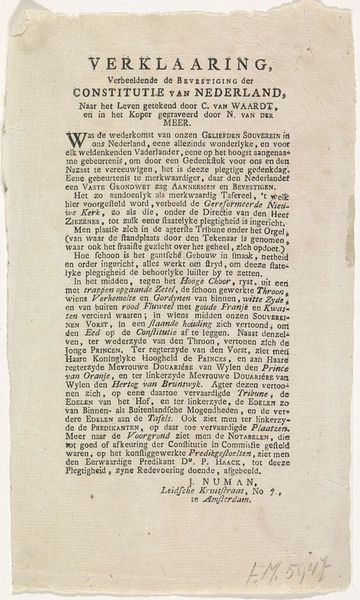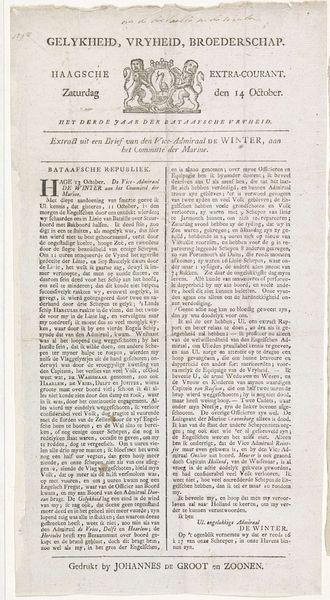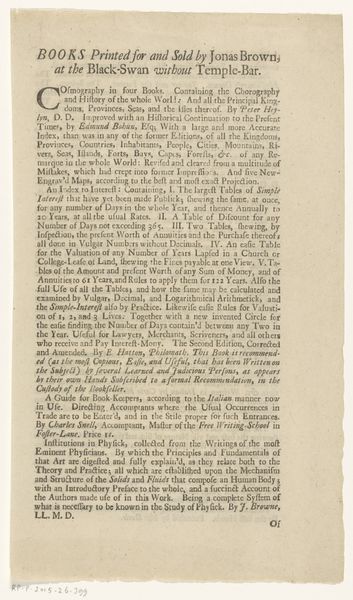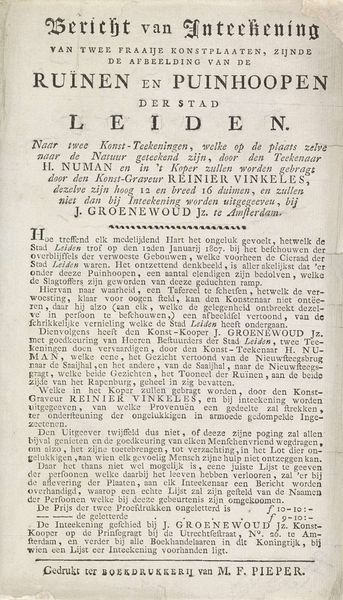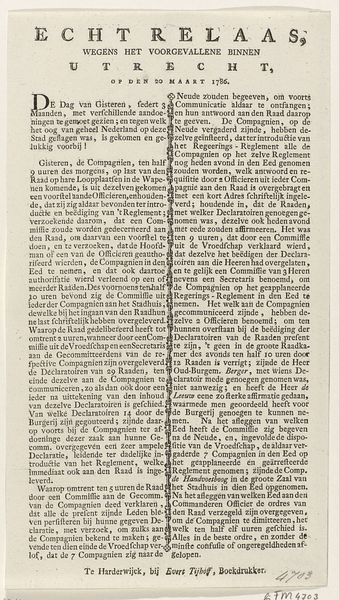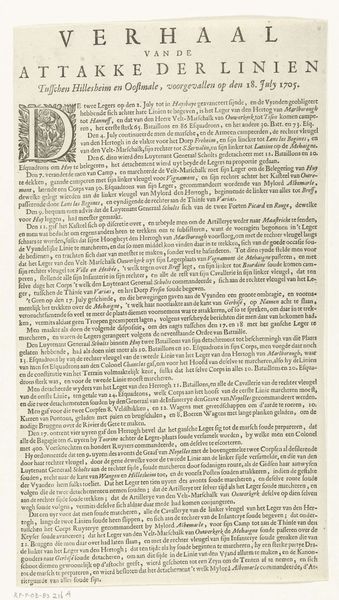
graphic-art, print, textile, typography
#
script typeface
#
graphic-art
#
dutch-golden-age
# print
#
editorial typography
#
textile
#
paragraph style
#
typography
#
newspaper layout
#
image and text
#
stylized text
#
thick font
#
handwritten font
#
captioned image
#
columned text
Dimensions: height 282 mm, width 162 mm
Copyright: Rijks Museum: Open Domain
Editor: This is a broadside titled "Nieuwsbericht over de beschieting van Hattem, 1786" from Jan Verlem. It's essentially a news bulletin printed during the Dutch Golden Age. What immediately strikes me is how urgent and immediate it feels, even though it’s centuries old. All that text! What do you make of it? Curator: Well, it's crucial to understand these news broadsides as artifacts deeply embedded in the socio-political turmoil of the late 18th century Dutch Republic. The Patriots versus Orangists conflict was raging, and imagery became intensely politicized. How do you think this piece participated in that political landscape? Editor: Given the urgency in the language, it seems intended to rally support, maybe even fuel resistance. I wonder about the intended audience and its effect on their sentiment and attitude. Curator: Exactly! The use of Dutch, the accessible language, aimed at a broad public readership which wasn't exclusive to the elites. It disseminated news about events like the siege of Hattem, shaping public opinion and potentially galvanizing action against the Orangists. Editor: It's amazing how such simple printed material could hold so much sway. Were these things typically displayed publicly? Curator: Often, yes. Posted in public spaces, read aloud in taverns... they functioned like today's social media, instantly transmitting news and influencing perspectives. They offer crucial insight into how the public sphere operated back then. This one is particularly potent due to its direct, emotive language and urgent tone, intended to quickly mobilize. Editor: That really shifts how I see it. It's not just an antique document, but a powerful tool for social and political manipulation! Curator: Precisely! Recognizing the political context is essential for interpreting any historical artwork, but pieces like this reveal how profoundly intertwined art, news and public sentiment could be. Editor: That connection gives a whole new appreciation for its impact and historical value. I'll certainly look at similar pieces differently going forward.
Comments
No comments
Be the first to comment and join the conversation on the ultimate creative platform.
